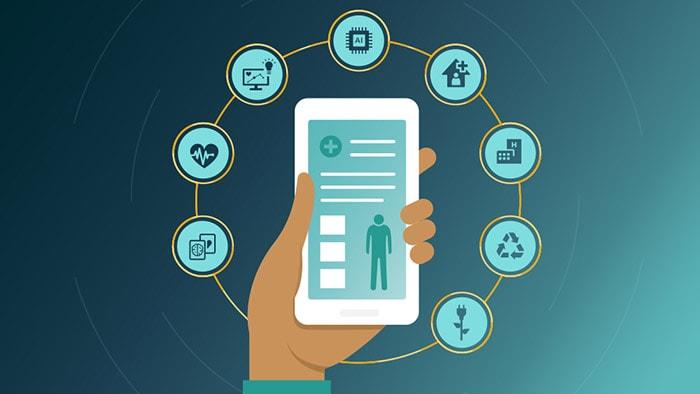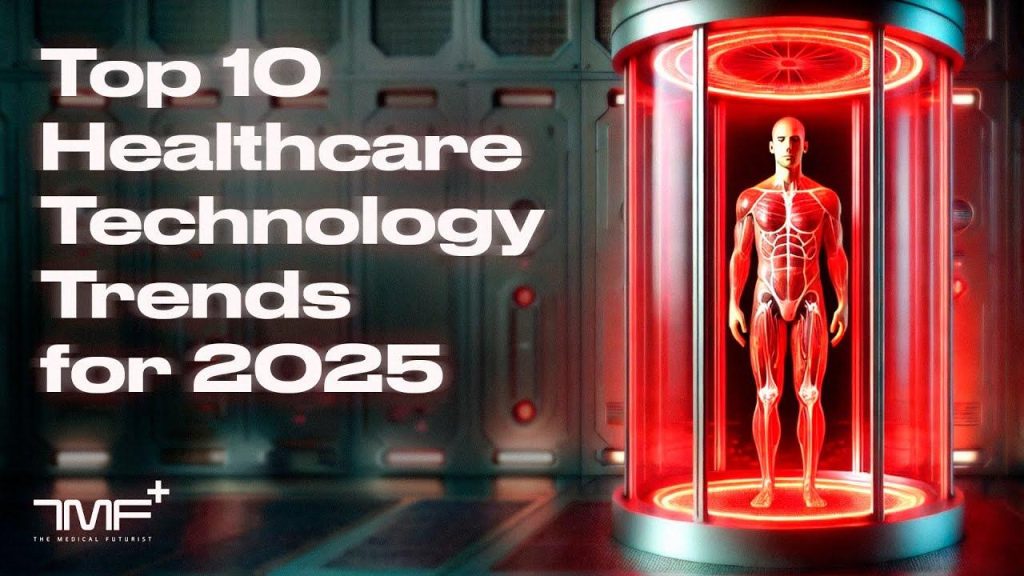In the rapidly evolving landscape of healthcare, 2025 is set to emerge as a pivotal year for technological advancements that prioritize longevity and enhanced patient care. Each year, industry experts sift through a plethora of announcements and studies to identify trends that are reshaping the future of medicine, and this year is no exception. Among the most notable predictions is the emergence of “practical longevity,” a concept that encapsulates the application of preventive measures and lifestyle modifications fueled by data and artificial intelligence. As movements like Brian Johnson’s “Don’t Die” gain traction, the conversation around maximizing lifespan is more urgent than ever.Additionally, innovations such as AI scribes promise to alleviate administrative burdens on healthcare professionals, allowing them to focus more on patient interaction. With the integration of digital health solutions into pharmaceutical treatments, the potential for transformative change in chronic disease management is on the horizon.As we look forward, the next ten trends highlighted by experts will elucidate how technology is poised to revolutionize the healthcare experience for patients and providers alike.
The Rise of Practical Longevity in Healthcare
The integration of innovative biomarkers into routine clinical practice stands to revolutionize how healthcare systems address aging and longevity. These markers enable providers to quantify biological age versus chronological age, leading to tailored preventive strategies that are based on individual health data rather than a one-size-fits-all approach. By utilizing multidimensional health assessments, professionals can not only identify age-related risks early but also intervene with personalized regimens that may include dietary adjustments, exercise programs, and advanced pharmacotherapy. This data-driven approach is instrumental in shifting the healthcare paradigm from reactive to proactive, ensuring optimal health outcomes for patients as they age.
Moreover, the rise of wearable health technology is central to the growth of practical longevity. Devices equipped with advanced sensors are proving invaluable for continuous monitoring of vital signs and movement patterns, allowing for real-time feedback and health management.This symbiotic relationship between patients and technology fosters a more engaged healthcare experience, empowering individuals to take charge of their well-being. As these tools become more sophisticated and data analytics improve, there will be a dramatic increase in early intervention capabilities, enhancing the overall quality of life and possibly extending life expectancy in meaningful ways.
Transforming Patient Interactions with AI Scribes
AI scribes are poised to revolutionize the way healthcare providers interact with their patients by automating documentation and administrative tasks that traditionally consume a meaningful portion of clinicians’ time. By seamlessly capturing patient conversations and translating them into structured notes, these intelligent systems allow physicians to engage more fully in the moment, enhancing the quality of clinical interactions. This shift not only reduces the risk of burnout associated with excessive paperwork but also creates a more personalized experience for patients, as providers can devote their attention to active listening and holistic care rather than getting lost in documentation.
The implementation of AI-driven scribing solutions can significantly streamline workflow efficiency within healthcare settings. For instance, healthcare professionals can benefit from features like real-time transcription and smart summarization, which help in quickly retrieving relevant patient history and treatment plans. Furthermore, integrating these AI tools with electronic health records (EHRs) optimizes data accuracy and allows for better collaboration among care teams. the rise of AI scribes signals a transformative change in patient engagement, setting the stage for a more innovative and compassionate healthcare landscape.
Integrating Digital Health with Pharmaceutical Innovations
The integration of digital health technologies with pharmaceutical innovations is fundamentally reshaping the landscape of medication management and patient adherence. By harnessing mobile health applications and telehealth platforms, patients can gain real-time access to their treatment plans, enabling better understanding and adherence to prescribed therapies.This tech-driven approach facilitates seamless communication between patients and healthcare providers, ensuring timely interventions when adherence issues arise. Moreover, personalized medication reminders and educational resources empower individuals to take control of their health journeys while minimizing the risk of complications associated with chronic diseases.
As pharmaceutical companies explore data analytics and Artificial Intelligence (AI) to enhance drug growth, the potential for precision medicine is becoming more tangible. Machine learning algorithms can analyze vast datasets to identify patterns that enhance drug efficacy and safety profiles tailored to patient demographics. In conjunction with digital health tools, these innovations can lead to more targeted therapies that not only improve outcomes but also reduce healthcare costs. The marriage of these technologies represents a paradigm shift, allowing for more adaptive, responsive, and patient-centric healthcare delivery that addresses individual needs while promoting overall population health.
The Expanding Role of Continuous Glucose Monitors in Wellness
Continuous glucose monitors (CGMs) are emerging as crucial tools not only for diabetes management but also for enhancing overall wellness across diverse populations. These devices equip individuals with real-time insights into their glucose levels, enabling a more informed approach to dietary choices and lifestyle modifications.The integration of CGMs into wellness programs empowers users to observe how different foods and activities influence their blood sugar, fostering a deeper understanding of their body’s responses. This personalized feedback can lead to better decision-making that impacts everything from energy levels to mood stability.
The transition of CGMs from clinical settings to mainstream wellness has pivotal implications for preventive health.As users collect data over time, patterns can be discerned that correlate with specific behavioral interventions, such as exercise routines or meal timing. This capability aligns perfectly with the rising demand for personalized health solutions, and the potential for these monitors to integrate with mobile applications only enhances their utility. Moreover, as these devices become more user-kind and accessible, expect to see a surge in adoption among health-conscious individuals keen on optimizing their metabolic health without the need for continuous clinical oversight.























